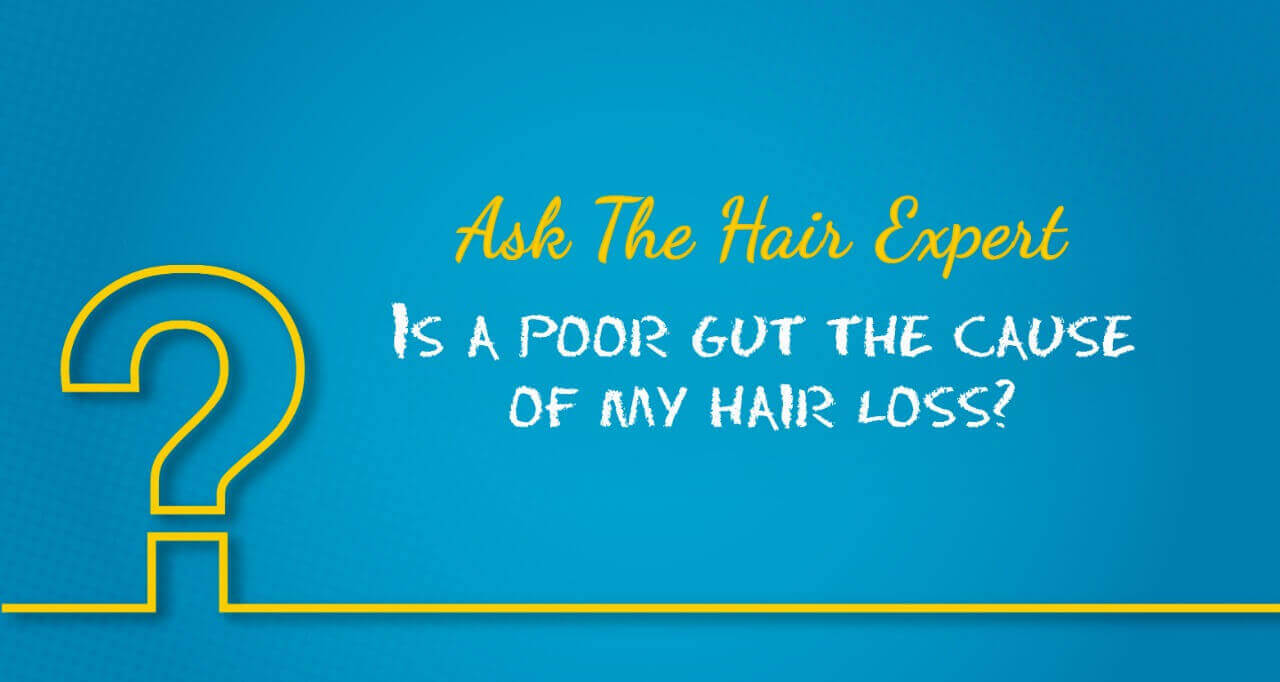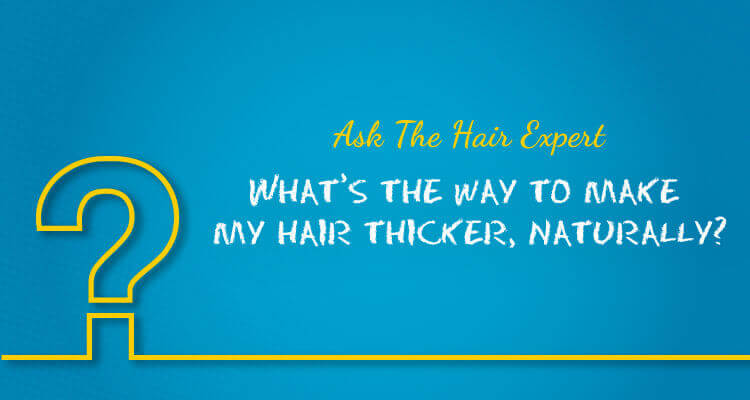Oiling, Shampooing, and Conditioning. The cornerstones to hair care. Something which most people do as part of their regular hair cleansing and hair care routine.
Now, there are some age-old traditions of deep conditioning, that is now being given fancy names and promoted! Hair masks.
Hair masks and packs have long existed (ask your granny!) and they are of great significance for healthy hair. But there is definitely a lot more noise about them these days, a lot many ‘therapies’ offered around it, with trending hashtags!
We know this for sure because we have been getting many queries in and around this topic over social media and during our clinic consultations. We are hence back today, for the benefit of all our readers, with our Ask the Hair Expert series, to address questions on the need for hair masks & packs. And how to use them right.
You asked: “What is the need for a hair mask or wrap? Isn’t shampooing and conditioning enough to care for my hair? How does a hair mask or a pack impact my already clean hair?!”
Here’s the answer from the Hair Experts.
Hair masks are deep conditioners that soothe your hair that’s dry & damaged from the surrounding stress, pollution, and modern hair trends!
You just need to ensure that you have picked the right one for yourself and that it’s used right in the right frequency. Your Trichologist will help you nail this one.
So, let’s first understand what happens to your hair when you use a hair mask or pack on it and how the process helps. We will also dish out some handy tips on how to use this wonder product right!
What’s the science behind deep conditioning?
Let us first explain how deep conditioning works.
If you are someone who follows our blogs, you know about the importance of conditioning and deep conditioning. Do read our blogs on washing your hair the right way, choosing the right shampoo and conditioners.
Each step serves a purpose. Each step is important for your hair in its own way, to let it breathe and grow, to stay bouncy, nourished and healthy.
The hair care process, each of the steps, has to do with hair anatomy. (do read our blog on the topic to understand your hair inside and out!). Conditioning and deep conditioning work on your hair’s outer most layer, the cuticle.
The cuticle is supposed to be flat and smooth for it to be healthy, look healthy, shiny and overall have a better body. Your hair looks alive and bouncy when your cuticle is smooth & healthy.
When you shampoo your hair, you clean the hair and scalp of dirt, grease, product build-up, and excess oil. During this process, your hair and scalp are cleansed but it doesn’t close your cuticle back.
Your hair conditioner does the job of smoothing these lifted cuticles and also helps balance the pH levels in your hair strands. If the cuticles remain lifted, they snag against each other, causing tangles, leading to breakage and damage.
While conditioner does its job, you need an additional step to truly tackle all the external factors affecting your hair. And that step is deep conditioning.
Especially, if you are someone who frequently styles your hair with heat equipment or colours hair, then your hair is bound to get dry, dull and brittle over time. You NEED to deep condition. ‘Cos your cuticles are awfully disturbed through it all! The damage your hair is exposed to is more, and unless you attend to it, you will eventually face breakage and hair fall.
Hair masks and packs have traditionally been the method to deep condition hair, keeping them nourished, hydrated and in good health.
What are hair masks/packs?
Hair masks, packs, and repair serums are essential for those with severely damaged hair. Hair masks or packs are deep conditioning treatments that help heal damaged hair.
Hair masks and repair serums help in protecting and restoring your hair’s keratin. It strengthens the core of each hair shaft with a mega-dose of protein while adding gloss and vitality without weighing it down with its oil content. Your hair will instantly look and feel healthier and extraordinarily shiny.
Even if your hair isn’t all that damaged in your assessment, using hair masks and serums are good practices to follow. They build the required strength in your hair, making it harder for your hair to get damaged in the long run.
If you have dry, brittle, dull and damaged hair, as mentioned above, you definitely need to include the process of using hair masks in your hair care routine. Also, those who have high hair porosity.
Hair masks play the role of repairing and strengthening your hair. That’s the focus. It is meant to be used maybe once or twice a month, as prescribed by your trichologist. It helps seal those damaged cuticles, repair the split-ends and all that damage caused by heat-styling, frequent hair colouring, harsh weather exposure or careless brushing/hair care.
They moisturize your hair and nourish the roots well. This accelerates hair growth by thickening the roots. Packs with natural ingredients like Brahmi, also help keep the scalp cool, strengthen the hair follicles, treats split ends and restore hair’s lost luster. Deep conditioning helps you prevent dandruff, reduce hair fall, fight hair thinning to an extent and add volume and bounce to hair texture.
However it is important that you understand (a) if your hair warrants deep conditioning, (b) if yes, what kind, (c) how to use it and (d) at what frequency. And this is something that can be advised only by someone who understands your hair and scalp well. Your Trichologist.
Choose wisely…check out the ingredients
You have a myriad of products in the market that offer deep conditioning. What you truly need to pay attention to are the ingredients, and if they are right for you.
Hair mask that you use should depend on your hair type. If your hair is extra dry, then there is a certain need. If its extra oily, then it would vary. Various ingredients serve different purposes. If your hair is colored, there are special masks meant to restore your hair’s health (as you know hair colouring does cause damage!).
Here are some key ingredients, that we would recommend, to look out for.
Brahmi is known for its healing properties and is highly recommended by Ayurveda. It moisturizes hair, nourishes the roots well and accelerates hair growth by thickening the roots, helps keep the scalp cool, strengthens the hair follicles, treats split ends & repairs hair damage, restores its lost luster, adds volume and bounce to hair texture, helps prevent dandruff and reduces hair fall.
Henna is a trusted, natural and effective way to cover your grey hair. Not only that, henna also makes your hair strong, voluminous and shiny. But Henna isn’t used as-is for this purpose. It is combined with some key ingredients like arnica, amla, reetha & shikakai.
Arnica is a perennial herb belonging to the sunflower (Asteraceae) family. It is very effective for the treatment of split ends and premature greying of hair.
Amla or the Indian gooseberry is a wonderful beauty ingredient, especially for your hair. It prevents dandruff, gives your hair a natural shine while nourishing hair from root to tip. It also helps to reduce hair fall.
Reetha or soapnut is excellent at conditioning and rejuvenating the hair.
Shikakai is a wonderful herb that has been used for years for hair care. It helps promote hair growth and reduces hair fall. It also prevents hair from greying naturally.
Quinoa, widely known as a dietary item, has some great qualities. It is very efficient in protecting and restoring your hair’s keratin, replenishing its daily good health. It strengthens the core of each hair shaft with a mega-dose of protein while adding gloss and vitality without weighing it down with its oil content.
Jaborandi helps in hair growth, nourishes a dry scalp, helps prevent premature greying of hair, keeps split ends at bay, removes and prevents dandruff and effectively moisturizes your hair.
Argan extract hydrates and helps nourish the hair cuticle from within, infusing the scalp and hair with vitamins, antioxidants, and essential fatty acids
How should you use hair masks?
- Do use a mask that is prescribed by your trichologist. Especially note the ingredients suitable to you.
- Read the instructions thoroughly and if a patch test is to be taken, please ensure you don’t skip that step!
- Mix and use as instructed, strictly. Proportions, if mentioned, should be carefully followed.
- After shampooing, squeeze any excess moisture out of your hair, leaving it damp but not drenched.
- Separate your hair into sections and then apply. You can secure the sections with clips or hair ties and apply your mask to one section at a time.
- Apply the nourishing mask evenly through the lengths and ends of your hair.
- Comb through your hair once the mask is applied – with a wide-toothed comb. Do not pull hard! Now, this may not work on all hair types… combing through with your fingers may be the best option.
- If you wish to optimize the mask or pack’s effect – wrap a warm towel around your hair while you wait out with the mask on.
- Leave it on only for the time needed and prescribed. This may vary depending on the mask being used and your hair type as well.
- Remember, a mask should go on freshly-washed, damp hair. It won’t get absorbed properly when hair is overly dry or when it is soaking wet.
- Rinse it out thoroughly with lukewarm water. Towel dry your hair by patting it gently.
- If you have been advised a Hair Serum as well, to tackle extensive hair damage, apply it with your hands. Distribute evenly through the mid-lengths to the ends of your hair. Do not rinse (unless otherwise specified).
This exercise helps preserve and lock up the much-needed moisture levels, nutrients in your hair. If you are someone who colours your hair, then this process will also lock in the colour longer. You will notice that your colour doesn’t fade out too soon when you regularly condition and deep condition your hair. As a result, your hair will not look dull or lifeless. On the contrary, it will shine with health.
Remember never to apply any conditioner or mask on your scalp, as that’ll make the roots oilier than they are supposed to be or naturally are. And avoid hot water for your hair wash routine. Do read our blog on the right way to wash your hair.
To re-emphasize and summarise, hair masks give your hair the TLC it needs, making it more manageable, and healthy overall!
If you are unsure about how to check whether a certain hair pack or mask is suitable for you or not, you can have it checked with your trichologist. No one understands your hair better than your hair doctor!
Remember, each individual’s hair & scalp condition is different from the other. One solution doesn’t fit all! While a certain hair pack or mask suits you, it may not quite suit your friend. The way each individual’s hair reacts to internal and external factors, products, treatments, varies from person to person. A trichologist is someone who understands this, is an expert on hair and scalp concerns, and hence the right person to guide you on this subject.
And with that, we sign off today! Get going with our social media handle for more exciting and engaging stuff on hair and scalp care, our website, and blogs for editor’s choice and expert articles. We will catch you on Monday with more.
If you have anything specific to ask on hair care, hair trivia, hair loss treatment, so on and so forth, feel free to reach out to us on social media, and we will get our hair doctors to answer them. And you can catch the solutions in our next blog.
You can also reach out to our clinics anytime, for one-on-one hair and scalp consultation. Our trichologists will help diagnose your hair and scalp condition and prescribe for you the right treatment for hair loss and other concerns. Not just that you will also get great advice on how to lead a healthy balanced lifestyle leading to awesome hair!



